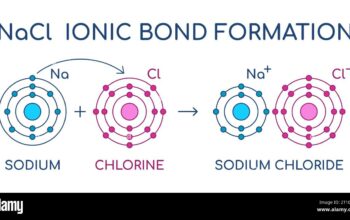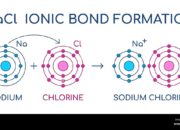The atomic nucleus, a compact central core of an atom, is predominantly composed of protons and neutrons. While protons, which carry a positive charge, are central to defining an element’s identity through atomic number, neutrons are neutral and their role often remains a subject of debate. Engaging in a playful inquiry: do neutrons actually contribute to the chemical properties of an element? This question invites us to delve deeper into nuclear structure, atomic interactions, and the broader implications for elemental behavior.
To embark on this exploration, one must first grasp the foundational distinction between chemical properties and other atomic characteristics. Chemical properties are those attributes that dictate how a substance interacts with other substances, influencing reactions, reactivity, bonding behavior, and stability. Traditionally, the focus has been placed on electrons, the subatomic particles residing in the outer realms of the atom, since they are directly involved in chemical bonding and valency. Nevertheless, neutrons, despite their neutral charge, exert a profound influence on an atom’s stability and, by extension, its chemical behavior.
Neutrons are integral to the concept of isotopes. Isotopes are variants of a chemical element that differ in neutron number while maintaining the same number of protons. This variance can dramatically influence stability and reactivity. For instance, carbon exists primarily as carbon-12, which is stable, and carbon-14, a radioactive isotope that decays over time. The instability of carbon-14 leads to different chemical behaviors under specific conditions, particularly in radiochemical applications. Therefore, while neutrons do not directly participate in chemical bonding, their presence, or absence, can alter the stability and thus the reactive pathway of an element.
Furthermore, let us consider nuclear forces and their implications on chemical properties. Neutrons contribute significantly to the strong nuclear force—the interaction that holds the nucleus together against the repulsion between positively charged protons. This interaction is crucial for the overall integrity of the atom. A more massive nucleus, populated with neutrons, may result in a stronger bond that oversees the existence of heavier elements. In essence, the presence of neutrons can dictate the limits of atomic size and influence elemental categorization in the periodic table. Heavy elements, such as uranium or plutonium, showcase isotopes that showcase varying neutron counts, highlighting significant differences in their chemical properties related to radioactive decay, electron binding energy, and interaction with light.
The relationship between neutrons and electrons is equally compelling. The stability of an atom, which hinges upon its neutron-to-proton ratio, can indirectly influence electron distribution within atomic orbitals. Chemical reactions are contingent upon electron configurations, and fluctuations in atomic stability due to neutron presence may alter reaction rates, thermodynamic pathways, and even the formation of complex molecular structures. An altered atomic structure due to neutron irregularity can set forth ripple effects on electron behavior, thereby impacting overall chemical properties.
Yet another fascinating aspect concerns the role of neutrons in nuclear reactions. During fission—the process by which heavy nuclei split into lighter nuclei—neutrons play a precarious role. While this scenario transcends traditional chemical properties, it inevitably affects the subsequent chemical properties of the resultant lighter elements and isotopes, which may behave differently in chemical contexts. This nuclear interaction, though seemingly distant from everyday chemistry, challenges the perceived isolation of chemical behavior from nuclear properties, elucidating a more interconnected paradigm than previously presumed.
A formidable challenge presents itself when considering the influence of environmental factors on neutron behavior. For example, in neutron-rich environments—such as those found in certain neutron stars or during supernovae—chemical properties may diverge significantly from typical states observed on Earth. Here, extreme pressure and density lead to unique configurations and interactions between elements, raising questions about chemical behavior that extends beyond classical frameworks.
In conclusion, although neutrons do not directly facilitate the chemical reactions that are so fundamental to our understanding of chemistry, their influence is undeniable. They contribute to defining isotopes, affect atomic stability, alter electron configurations, and play a notable role in nuclear processes—all of which resonate throughout a substance’s chemical properties. The interconnectedness of nuclear and chemical phenomena calls for a nuanced perspective where neutrons, often overshadowed by their charged counterparts, are recognized as pivotal constituents of an atom. Thus, weighing the scope of an atom’s behavior mandates consideration of neutrons as more than mere spectators but as active participants in the elaborate dance of chemistry.












